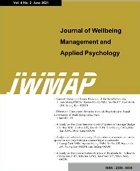- 권한신청
- E-ISSN2586-6036
- KCI
A Study on the Calculation of Greenhouse Gas from Incineration Plant in Seoul and its Impact on the Surrounding Area
A Study on the Calculation of Greenhouse Gas from Incineration Plant in Seoul and its Impact on the Surrounding Area

Woo-TaegKWON (Department of Environmental Health & Safety, Eulji University)

Jong-SunCHOI (Korea EMC Co., Ltd)

Jin-SooCHOI (Department of Environment Health & Safety)

Hong-JunYANG (Department of Environment Health & Safety)

Abstract
Purpose: This study aims to understand the types and amounts of greenhouse gases among substances generated when operating facilities at resource recovery facilities in Seoul and analyze their impact on the environment. Research design, data and methodology: As a research method, you can directly visit four resource recovery facilities in Seoul, investigate greenhouse gases generated when operating the facilities, and then understand the distribution of generation through the greenhouse gas calculation formula. In addition, the impact, distribution, etc. that they have regionally can be confirmed by comparing the emission source and the surrounding site boundary line through the environmental impact survey report Results: When operating resource recovery facilities, you can determine whether there is a possibility that they will actually affect the surrounding areas, especially in areas where humans reside, such as private homes and vulnerable facilities, and if so, the results can be determined. The goal of this study is to understand how much the effects of greenhouse gases contribute to climate change and what the effects are on the human body. Conclusions: he results of this study can identify the causes of negative images of the survival of resource recovery facilities and the expansion and establishment of new resource recovery facilities, and suggest eco-friendly measures such as waste export, recycling, and recycling instead of new construction on the impact on climate change.
- keywords
- Resource Recovery Facility, Incineration, Greenhouse Gas, Resident Health Impact Survey
- 다운로드 수
- 조회수
- 0KCI 피인용수
- 0WOS 피인용수















